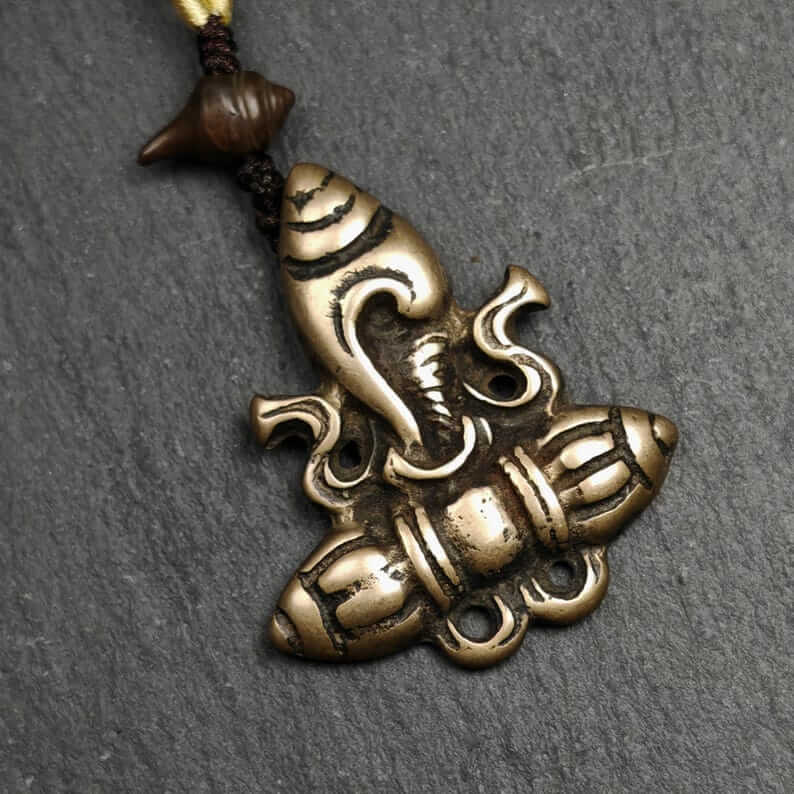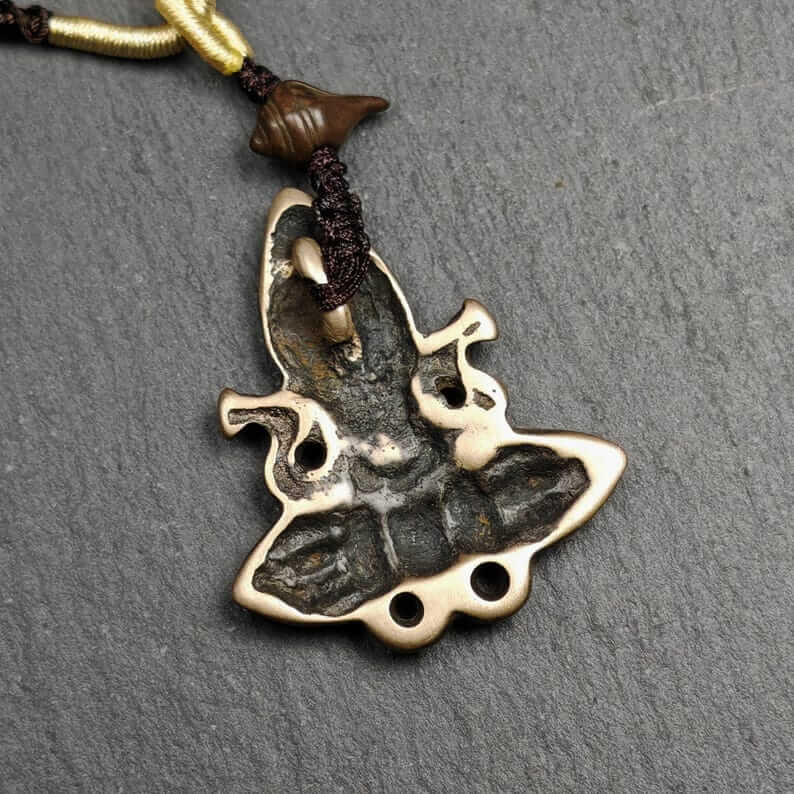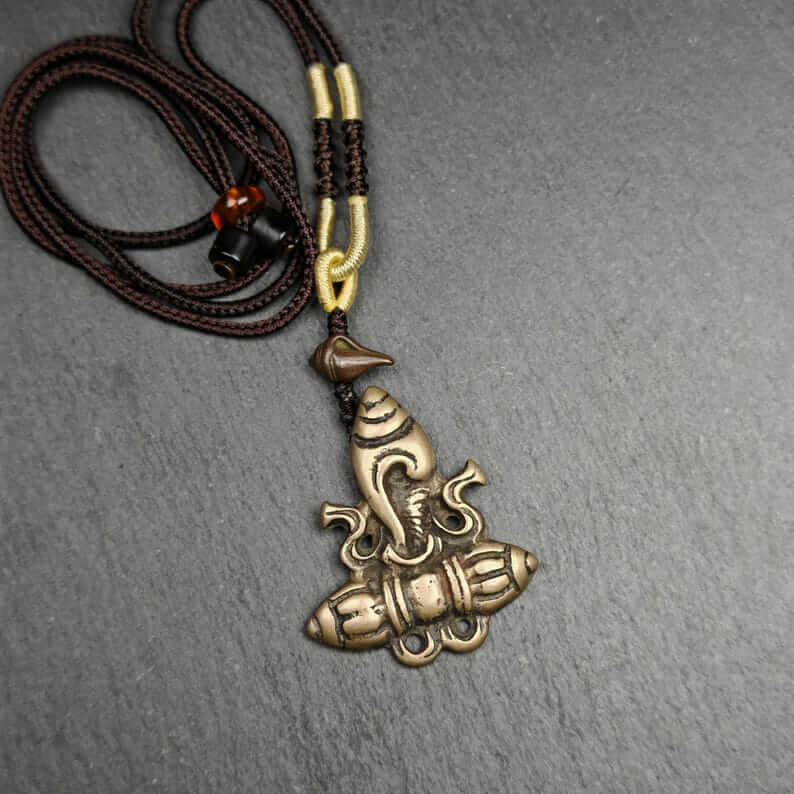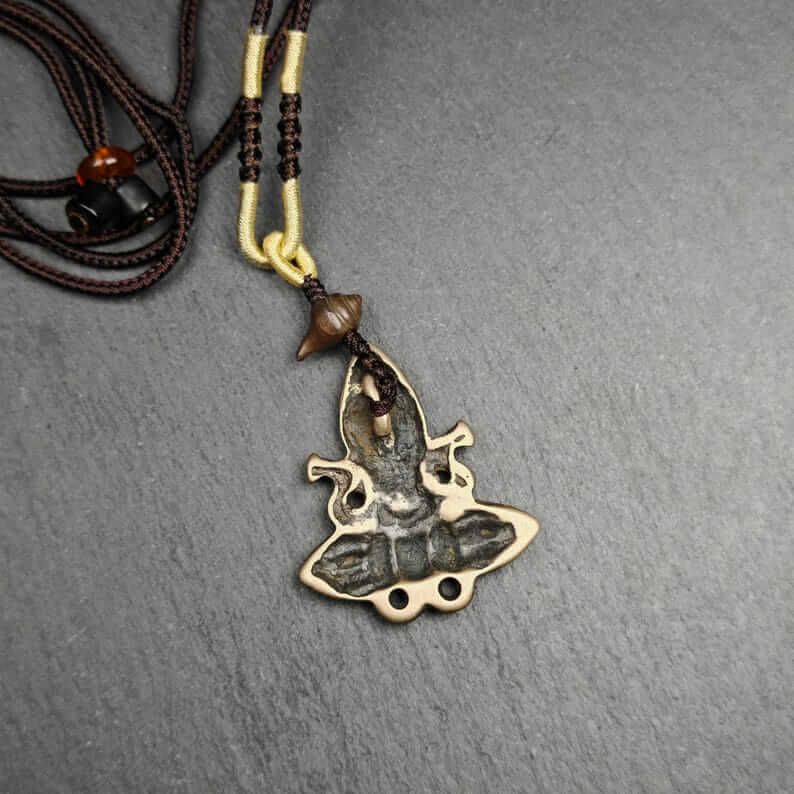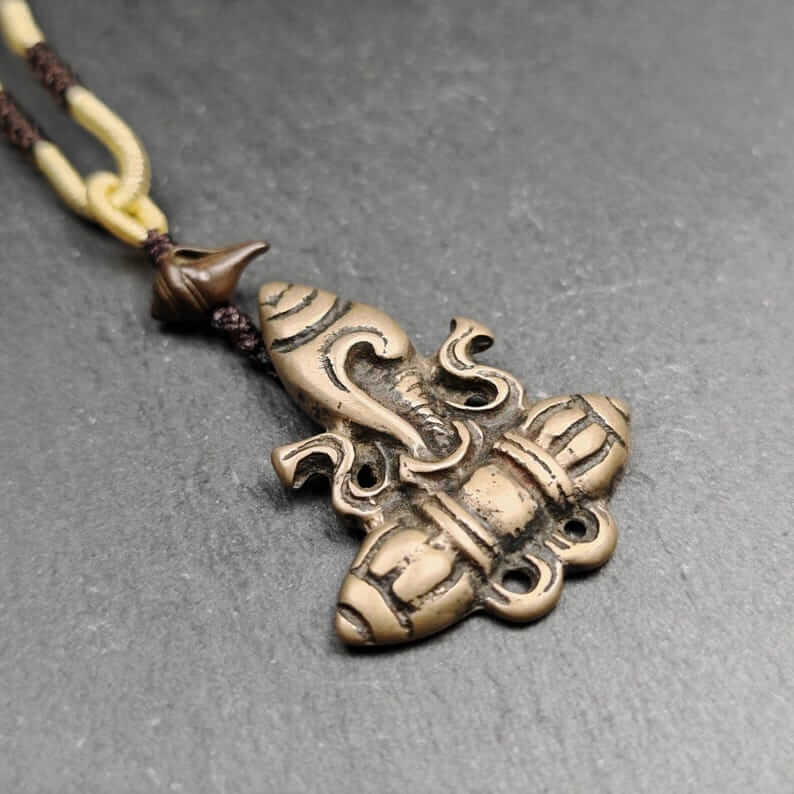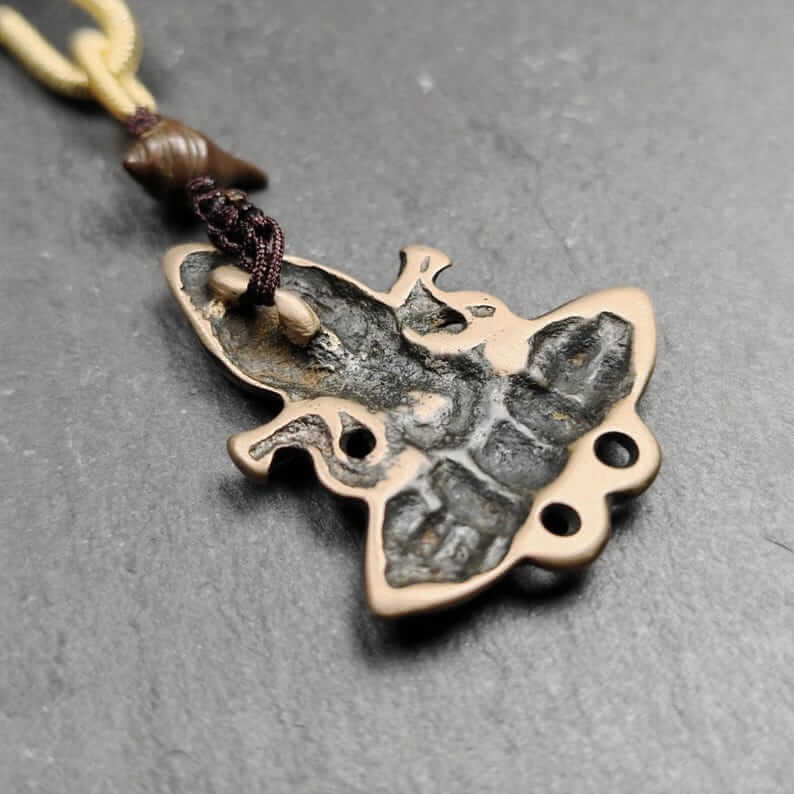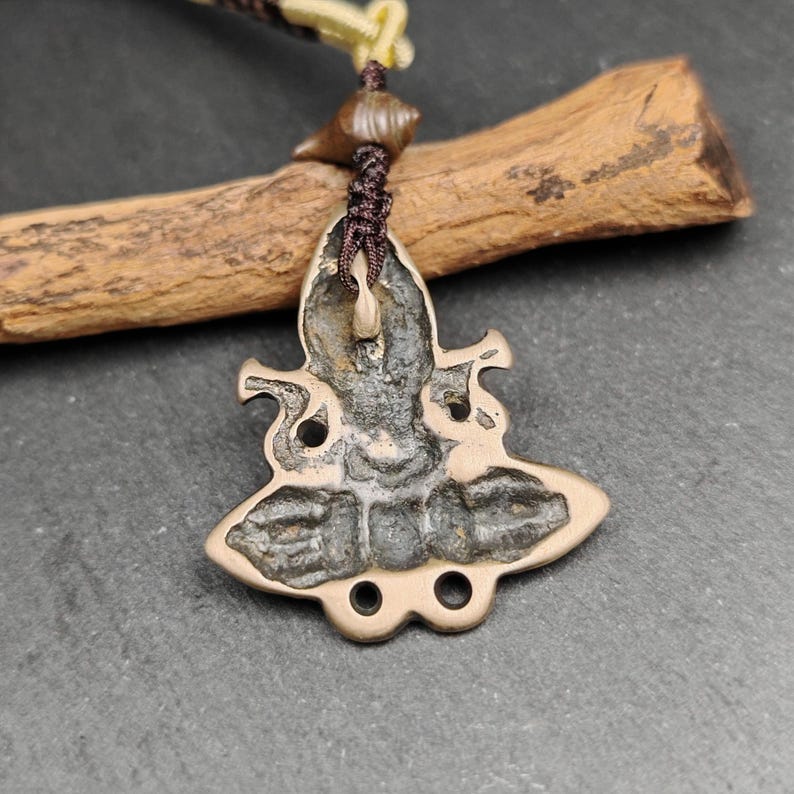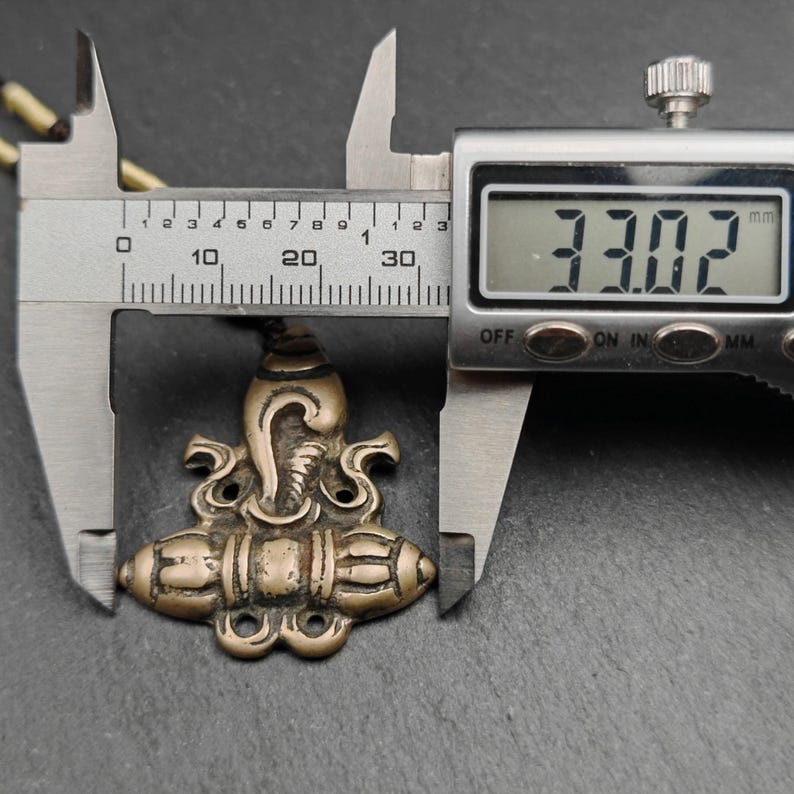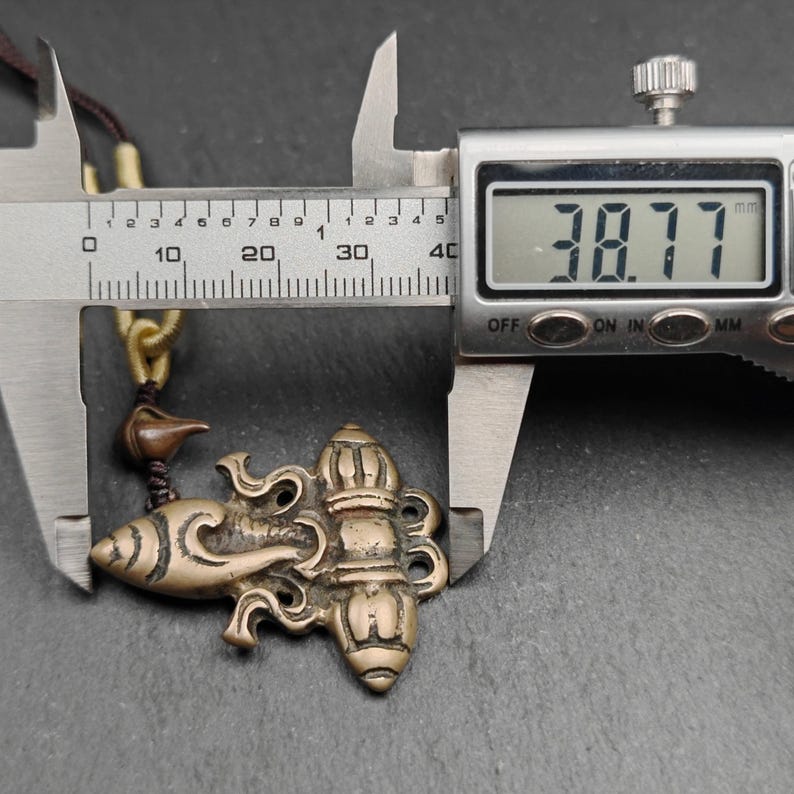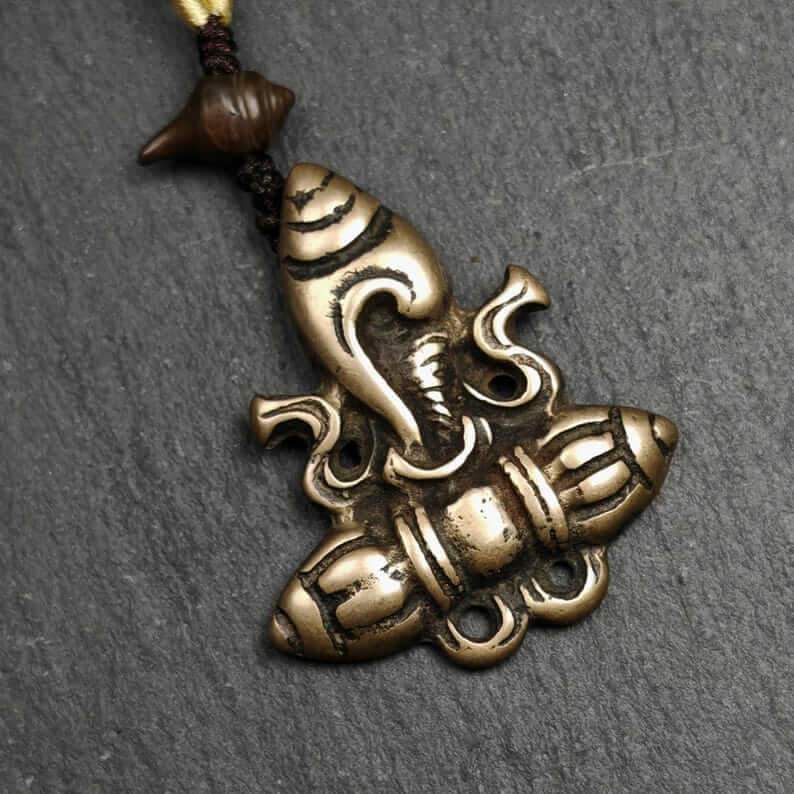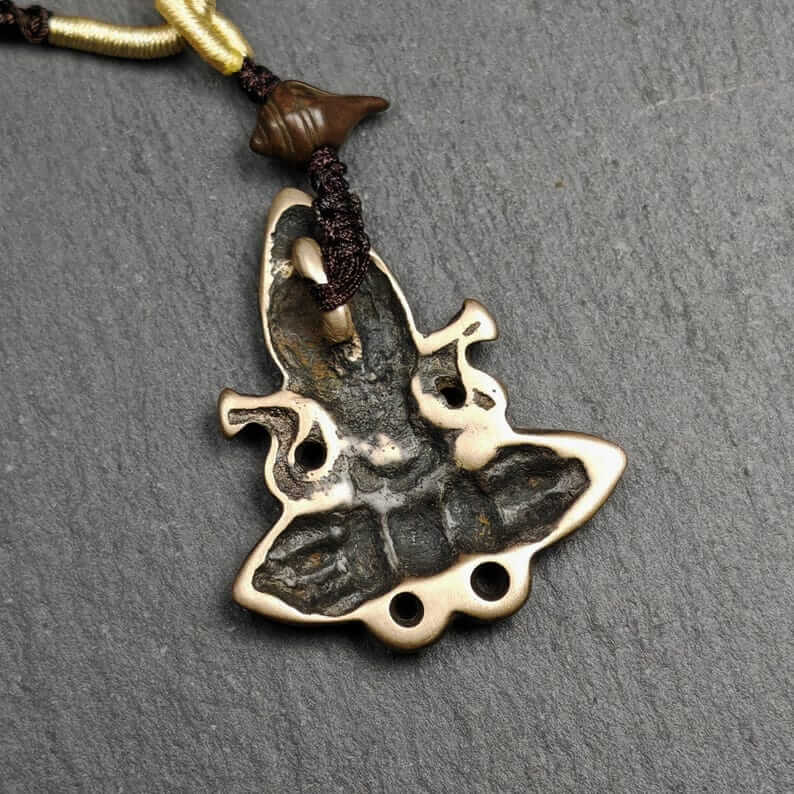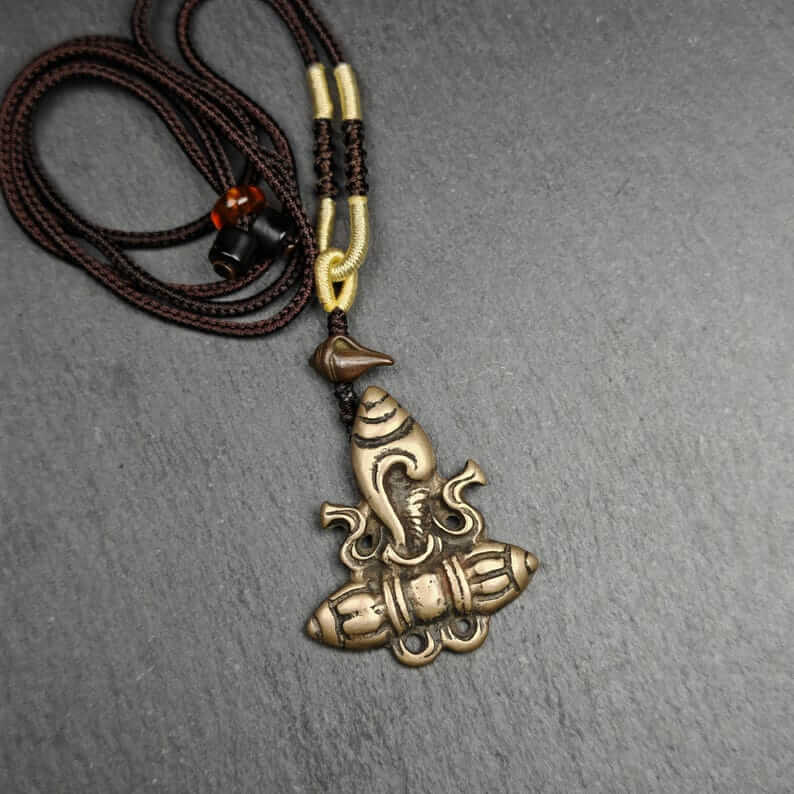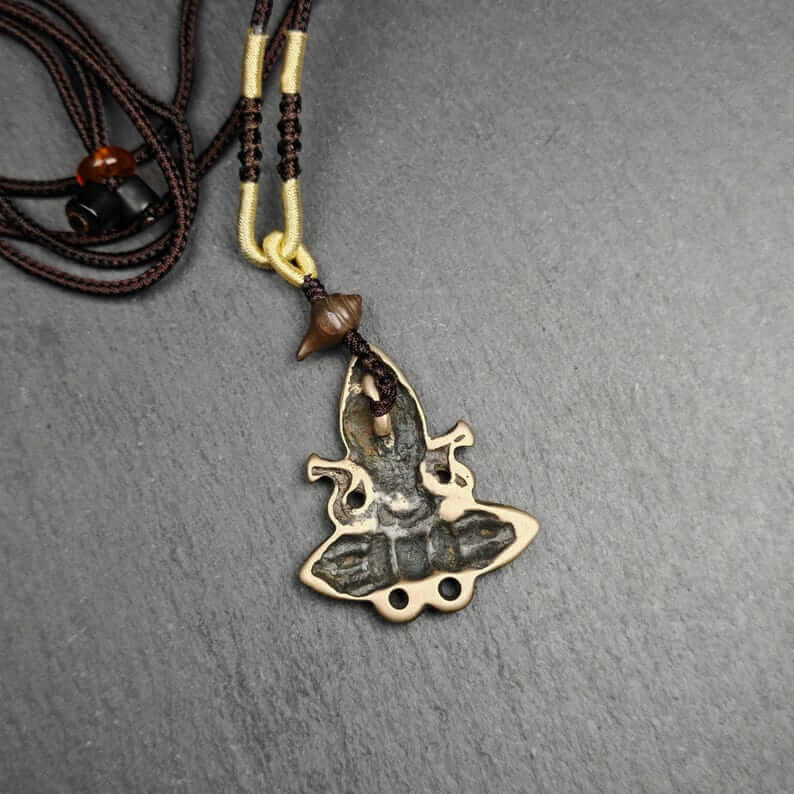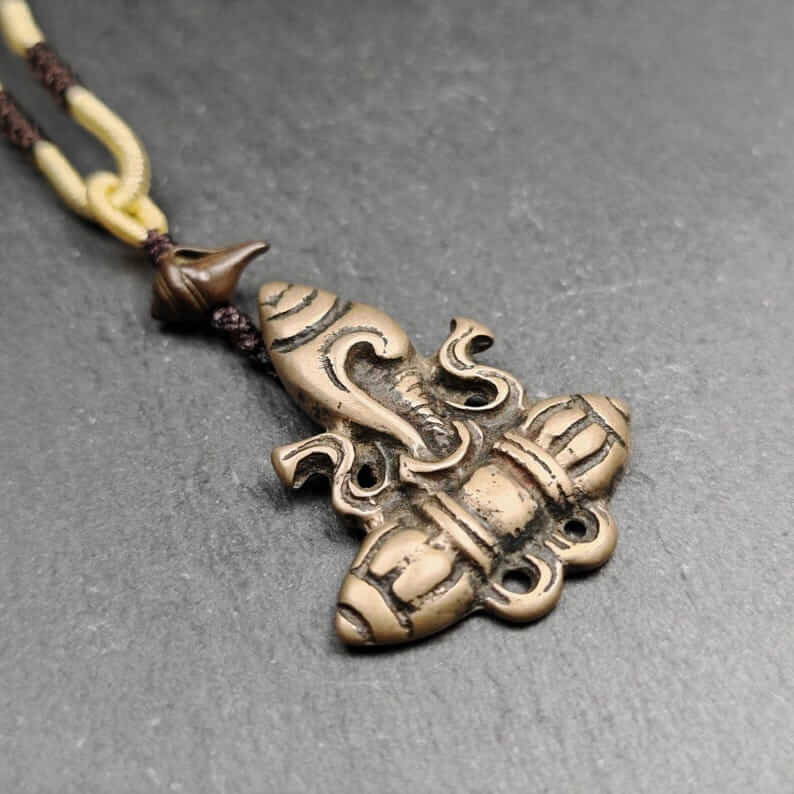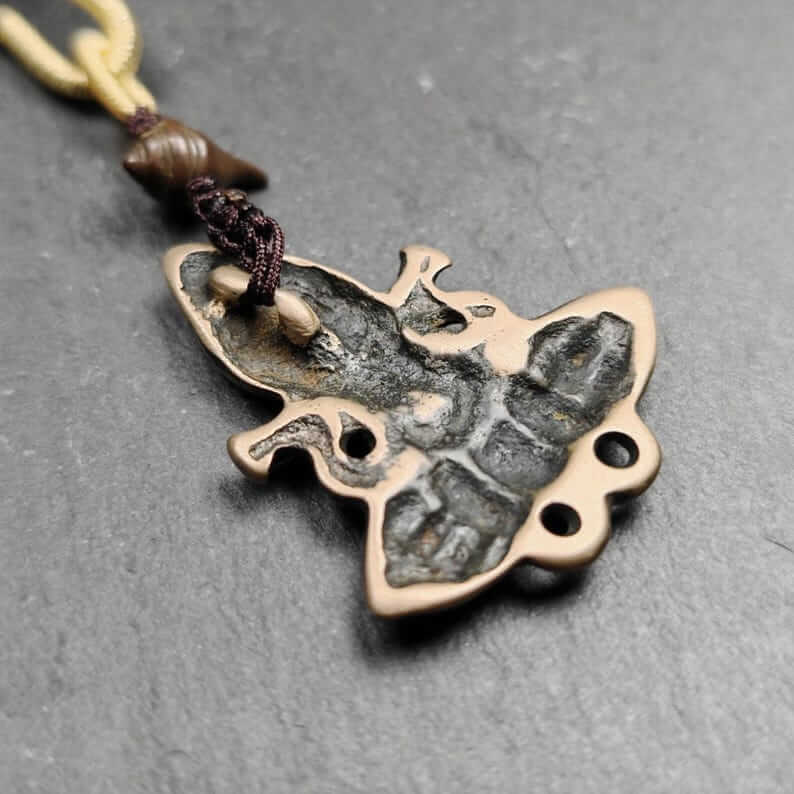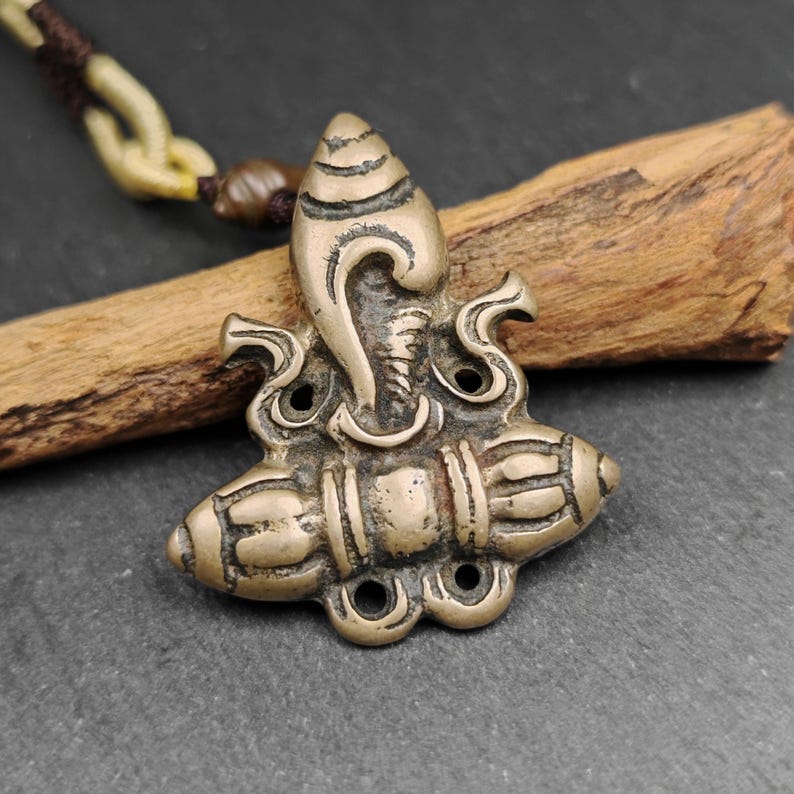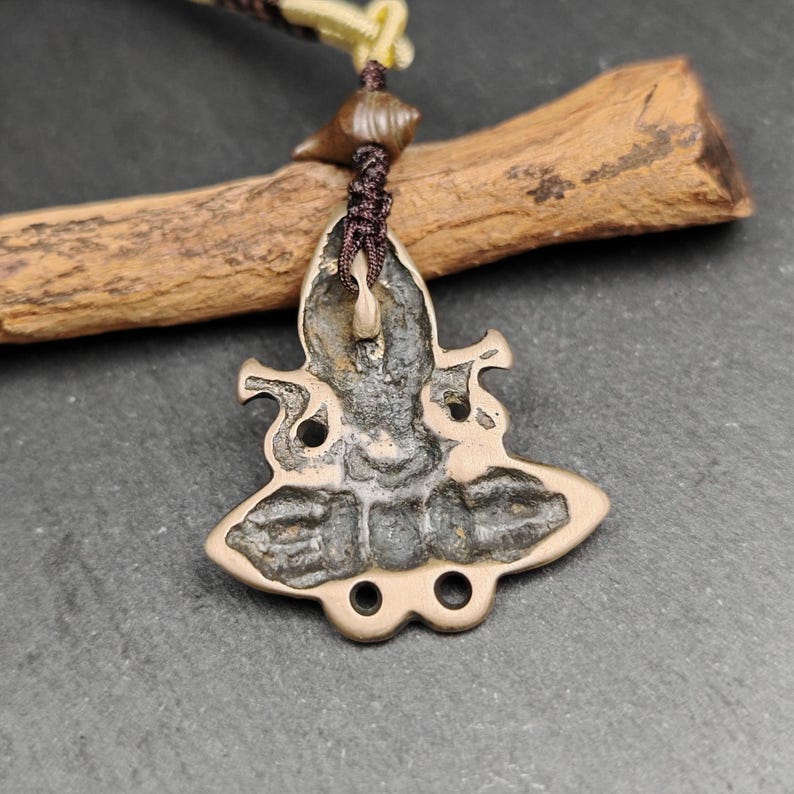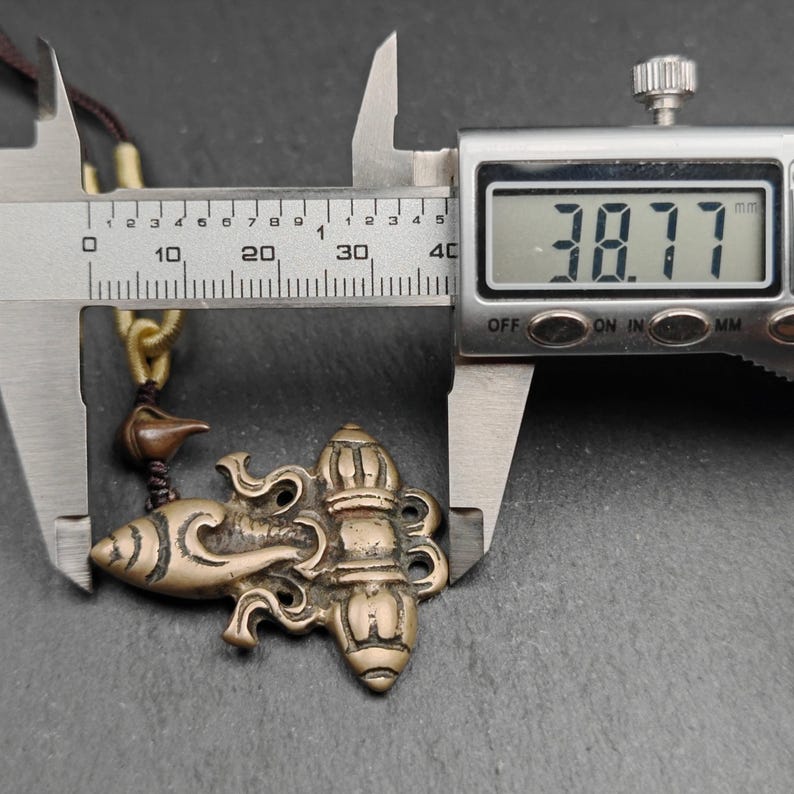Tibetan Amulet | Shankha Divine Conch Shell Badge
Tibetan Amulet | Shankha Divine Conch Shell Badge
Impossibile caricare la disponibilità di ritiro
Gandhanra Tibetan Sacred Conch Amulet – A Blessed Masterpiece of Spiritual Art & Tradition
Crafted with devotion at the revered Kathok Monastery, this extraordinary amulet features Buddhism’s Eight Auspicious Symbols—centered around the sacred conch, elegantly paired with a vajra (dorje) base for grounding power. Meticulously blessed by Tibetan Buddhist masters, it serves as both a profound spiritual protector and a timeless wearable artifact.
Why This Amulet?
Sacred Symbolism: The conch (symbolizing enlightenment’s sound) and vajra (representing unshakable wisdom) unite to dispel obstacles and invite blessings.
Handmade with Blessings: Each detail reflects traditional Himalayan craftsmanship, ideal for collectors, practitioners, or those drawn to Tibetan Buddhist art.
Meditative Beauty: Its intricate geometry encourages mindfulness, making it a meaningful gift for meditation enthusiasts or Dharma friends.
Carry a piece of living tradition—where sacred artistry meets enduring spirituality. A rare fusion of protection and elegance.
Details
100% Handmade
Pendant material:lima brass
Pattern: conch badge
Length: 38mm
Width: 33mm
ABOUT Shankha
A Shankha (conch shell) has religious ritual importance in Hinduism. It is the shell of any suitable sea snail which had a hole made for the performer's embouchure.
In Hindu mythology, the shankha is a sacred emblem of The Hindu preserver god Vishnu. It is still used as a trumpet in Hindu ritual, and in the past was used as a war trumpet. The shankha is praised in Hindu scriptures as a giver of fame, longevity and prosperity, the cleanser of sin and the abode of goddess Lakshmi, who is the goddess of wealth and consort of Vishnu.
The shankha is displayed in Hindu art in association with Vishnu. As a symbol of water, it is associated with female fertility and serpents (Nāgas). The shankha is the state emblem of the Indian state of Kerala and was also the national emblems of the Indian princely state of Travancore, and the Kingdom of Cochin.
The shankha is one of the eight auspicious symbols of Buddhism, the Ashtamangala, and represents the pervasive sound of Buddhism.
A powder made from the shell material is used in ayurveda as a treatment for stomach ailments.
In the Western world,the shell of this species is known as the "divine conch" or the "sacred chank". It may also be simply called a "chank" or conch. The more common form of this shell is known as "right-turning" in a religious context, although scientists would call it "dextral". A very rarely encountered form has reverse coiling which is called "left-turning" in a religious context, but is known as "sinistral" or left-coiling in a scientific context.
